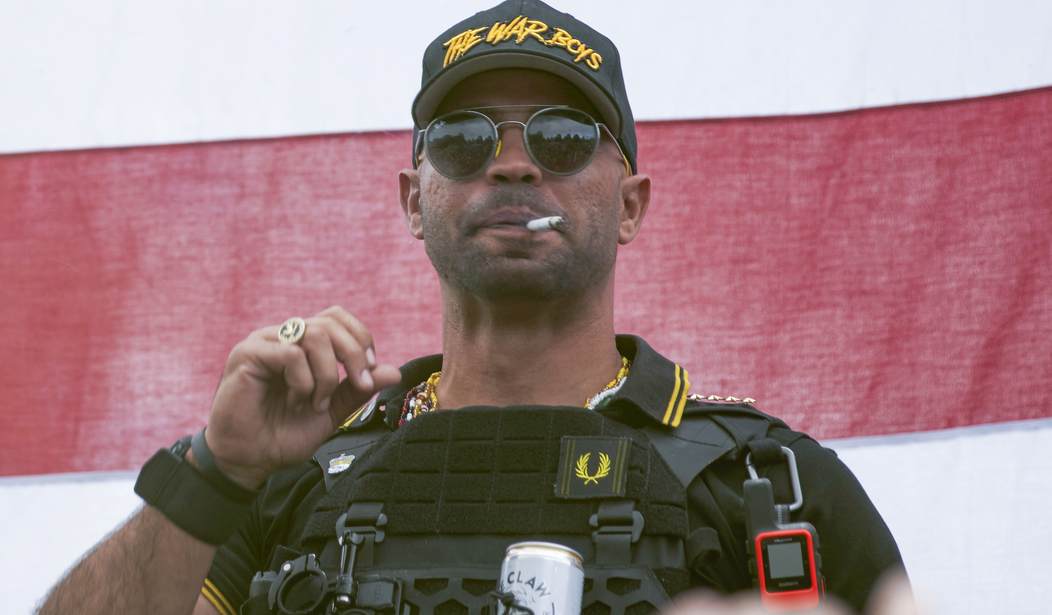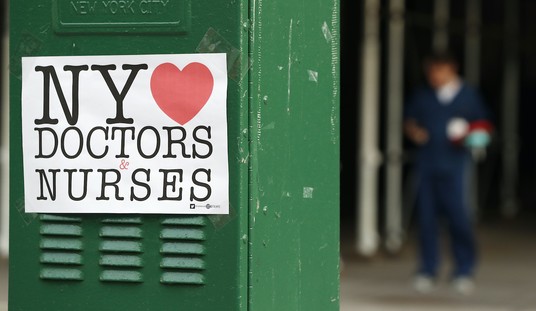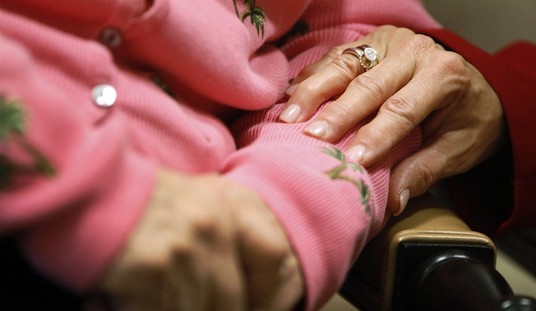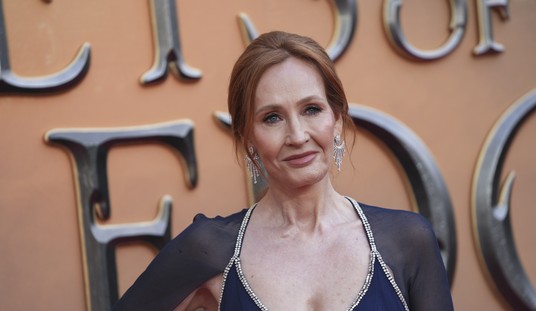Tuesday, attorneys for three Proud Boys defendants made their closing arguments on day sixty-two of the high-stakes federal trial alleging seditious conspiracy in the January 6 Capitol riot. Closing arguments were made on behalf of Enrique Tarrio, Dominic Pezzola, and Joesph Biggs. On Monday, an attorney for the Department of Justice (DOJ), Connor Mulroe, delivered the government’s closing arguments, followed by the defense’s closings for defendants Ethan Nordean and Zachary Rhel.
The five defendants are charged in a ten-count indictment, including three charges of conspiracy, with the most serious charge of seditious conspiracy carrying a maximum penalty of twenty years in federal prison. The government has hinged its case on the concept of an implicit conspiracy. This means that the allegations are not of an explicit conspiracy with a “smoking gun” (figurative) but an implied agreement. While the government reviewed half a million messages, what they found was not an explicit conspiracy, or they wouldn’t be pitching the implicit theory.
Unspoken Agreements Without Plan or Objective
During the trial, witness for the prosecution Jeremy Bertino testified about an alleged implicit or implied agreement referencing this as an “unspoken agreement.” Bertino is a former Proud Boy who has taken a plea deal including the charge of seditious conspiracy. Bertino arguably testified in the self-interest of receiving a reduced sentence. He faced additional charges related to unlawful possession of firearms and thousands of rounds of ammunition, which makes his case more serious than the defendants in this trial who do not have any firearms charges. After his house was raided in March of 2022, Bertino conducted several meetings with the government. By June, Bertino became part of a witness relocation program where the government paid his rent so he could get out of where he was living.
While defense attorneys impeached his credibility by noting Bertino’s changing story to law enforcement, that he lied about the firearms and has quite obvious motives, from his testimony came one of the most important quotes for the defense.
Bertino testified that he had entered “unspoken agreements” and during cross-examination, he revealed that these alleged agreements that he held in his mind, included no plan, and no objective. The defense has routinely focused on how it could even be possible that one could enter an agreement in their minds that includes no plan and no objective.
In his closing, DOJ attorney Mulroe told jurors:
A conspiracy can be unspoken, implicit. A wink and a nod.
Bertino was a point of contention for reasons beyond his fascinating testimony of agreeing in his head to… no plan or objective… but because FBI Agent Nicole Miller fed him bad information in an interview, telling him that Tarrio created a now infamous document (that was planted in his email in the days ahead of January 6) titled, “1776 Returns.” Bertino reacted by saying, “Wow,” and testified to feeling a sense of betrayal toward Tarrio.
Nayib Hassan, attorney for Tarrio, reminded the jurors of this lie the government told about his client. The defense contends that not only did Tarrio not create that document, (the prosecutors don’t appear to allege that he did) there is no evidence he ever opened the email, let alone shared it with anyone else.
[now playing audio of "lie of FBI Agent Nicole MIller" where she inaccurately told Bertino that Tarrio created 1776 Returns document. Bertino says "wow."]
these agents lied to bertino … did nothing to correct Miller's lie …
He lied to you. he was teaching a young …/62
— Roger Parloff (@rparloff) April 25, 2023
In their closing, the government stated that they don’t need to prove any time frame for when the “unspoken agreements” even took place. Mulroe said:
Conspiracies can be unspoken, implicit, mutual understandings with no specific time requirement.
Hassan played a video for the jurors of Tarrio in a Zoom call on December 31, less than a week prior to January 6. Tarrio says:
We’re never going to be the ones to cross a police barrier.
The government has also relied on what is known as the “tools” theory, where other people who are not co-defendants carried out aspects of the “unspoken agreements”… albeit also without any explicit knowledge of joining a pre-ordained imagination agreement.
Closing Arguments for Tarrio
And, they allege that all this happened under the unspoken direction (?) of then-Chairman Tarrio, although he wasn’t actually present in DC on January 6th. Tarrio was instead complying with a court order after being arrested on January 4, for burning a banner at a rally the month prior. Tarrio was initially expected to speak on a stage alongside Latinos for Trump on January 6 but left DC in compliance with the terms of his bail.
In short, the government has alleged that the defendants orchestrated January 6th via something like telepathy.
In fact, Nayib Hassan, attorney for Tarrio referenced telepathy in his closing argument, saying:
The Government wants you to believe Tarrio telepathically told him it was okay to engage in violence on January 6. That’s like blaming video games for violence in the world. Do we blame our wrongdoing for things we see on YouTube? That’s what the government is doing…
Hassan hammered against the government’s implicit conspiracy theory saying that Tarrio was picked up by a Confidential Human Source (CHS), Kenny Lizardo, as he left jail on January 5, and that there were eight other known CHSs present among the Proud Boy group who marched together on January 6, and the informants reported no plan, no objective and no understanding of an objective. Nick Smith, attorney for Nordean made similar statements in his closing arguments.
Lt Shane Lamond
Hassan also reminded the jurors that Tarrio regularly communicated his plans when he was in DC to Metropolitan Police Lt. Shane Lamond. Tarrio gave Lamond his travel plans, what hotel he was staying at, the anticipated size of the group, and what they would be wearing. Lamond reported to superiors that the group would be “extremely small and not in colors.” Ultimately, this information was used in the banner-burning arrest of Tarrio on January 4.
Lamond was a controversial figure during the trial, as he wasn’t called to testify by the defense due to an investigation launched into his contact with Tarrio, which would have resulted in him likely pleading the 5th on the stand. Hassan called the government’s attempt to discredit Lamond “shameful,” highlighting a timeline of communications from Lamond giving other members of law enforcement and his superiors information regarding Tarrio’s plans, from November to January 4th.
For clarity, in closing arguments, the defense for the former Proud Boys leader Tarrio took up arguments in defense of a police lieutenant who gave information leading to Tarrio’s January 4 arrest.
Divergent Defenses
Each defendant has their own counsel, and there are differences in the defense arguments mounted against the charges. Motions to sever and have individual trials emerged numerous times throughout hearings. Tarrio’s defense is that he is being targeted and scapegoated and is not to blame for the events of January 6, pointing to the words and actions of former President Donald Trump, instead. Attorney for Biggs, Norm Pattis argued similarly in closing about the suggestion that the 2020 election had been stolen, stating:
The leader of the free world sold this view and many members of the Proud Boys believed it.
On Monday, Carmen Hernandez, attorney for Rhel, also invoked Trump in her closing arguments saying that the former President had a lot to answer for and alluding to the impacts on the state of minds of the public while stating that blaming the former President was not a defense but an explanation for what was going on. Hernandez also pointed to other politicians including Rudy Giuliani, saying:
“He pushed all these stories and made people nuts.”
Rehl: That's not a defense. The president made me do it. It's just a question of whats going on… all these crimes… you don't prosecute people for their thoughts. you only prosecute them when they do something intentionally.
— Brandi Buchman (@Brandi_Buchman) April 24, 2023
Hernandez implored the jurors to not buy into the implicit conspiracy theory saying her client was not in contact with many of the co-defendants and calling the burden of proof into question, saying:
The burden is on the government to prove conspiracy beyond a reasonable doubt. Rehl didn’t meet with Biggs, or Nordean, and had no calls with Biggs or Nordean, or Tarrio.
Hernandez also pushed back against the idea of “unspoken agreements” or telepathy alleged in the case, saying:
You don’t prosecute people for their thoughts. You only prosecute them when they do something intentionally.
Smith, attorney for Nordean, said in his closing that the government was using a “guilty by association” tactic against his client by showing jurors images of other rioters that day. Smith says his client was captured on video stopping an assault on a law enforcement officer on January 6, asking jurors:
This is evidence of his intent. Why would someone planning to interfere with law enforcement stop an assault?
Nick Smith says his client, Ethan Nordean, is captured on "multiple videos" stopping an assault on a law enforcement officer on Jan. 6th. "This is evidence of his intent. Why would someone planning to interfere with law enforcement stop an assault?" Smith asks.
— Carrie Johnson (@johnson_carrie) April 24, 2023
Pezzola’s defense, attorneys Roger Roots and Steven Metcalf, argue that police caused crowd chaos, by shooting non-lethal but injury-causing munitions into the crowd, although Pezzola took accountability on the stand for many of the actions he took that day. He testified that he didn’t know or had never communicated with several of his co-defendants, let alone conspired about sedition with them. This statement was echoed in closing arguments by Metcalf, who claimed Pezzola was included in this trial to “muddy up” the other four defendants by using his client as a “symbol of violence.”
Metcalf spoke candidly to jurors about the government’s theories, asking:
How can you have an agreement with someone you never communicated with?
On the stand, Pezzola asked that others not be held accountable for his actions that day, where he admitted to several acts including breaking a pane of glass and being in possession of a police riot shield. Metcalf told jurors in closing to hold Pezzola accountable for his actions, not going as far as to ask he be acquitted of all charges, rather asking:
But, seditious conspiracy, are you kidding me?
After the prosecution gave closing rebuttals on Tuesday, US District Court Judge Timothy Kelly gave jury instructions. The jurors will return to begin their deliberations on Wednesday.
Editor’s note: the author is acquainted with multiple people named in this article.














Join the conversation as a VIP Member